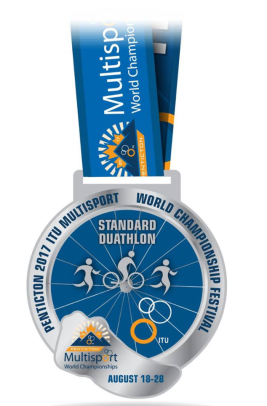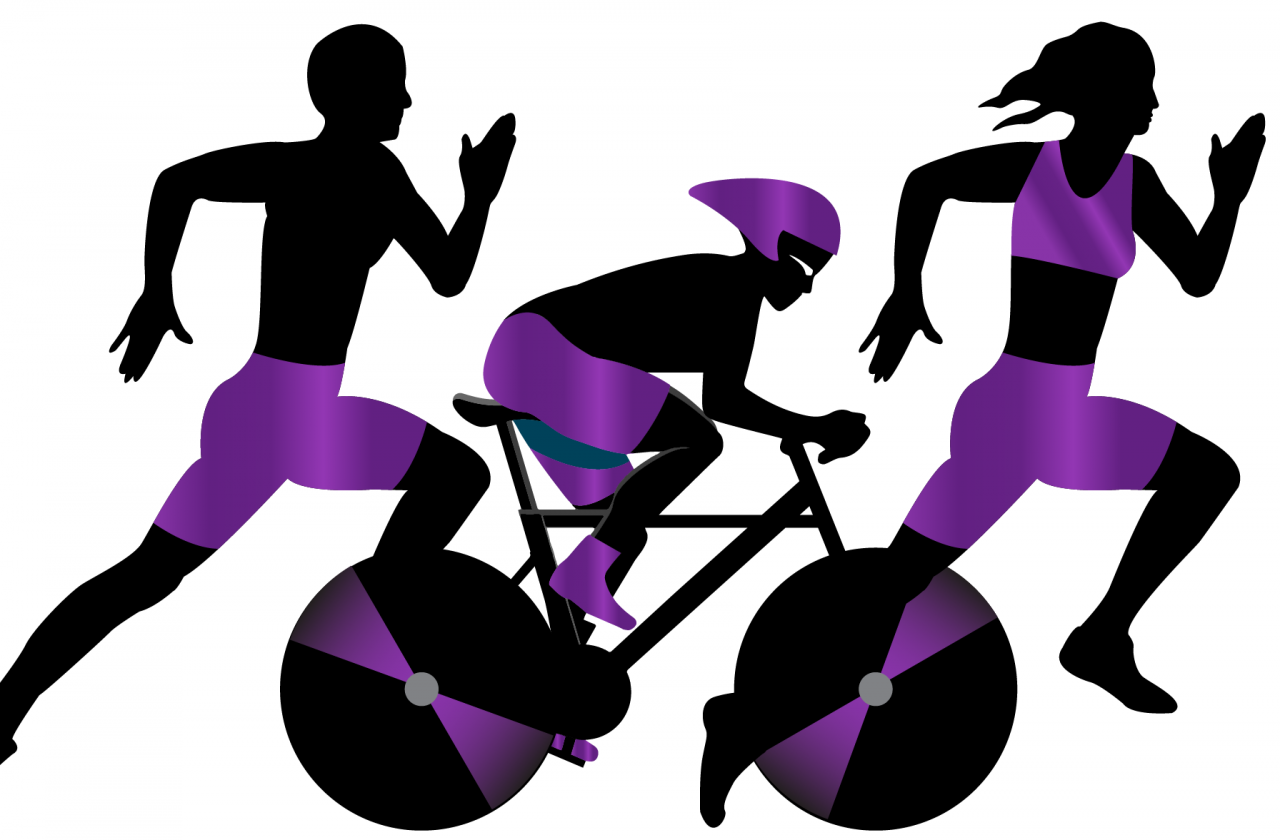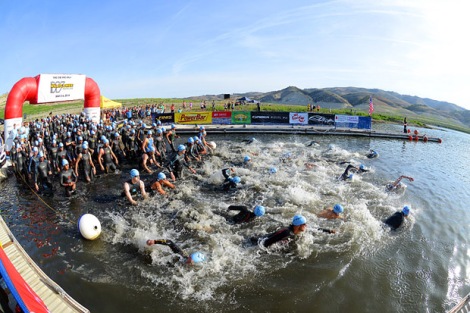Here’s another great column from legendary duathlon “mere mortal,” Dr. Steven Jonas. Funny he should bring up this very important topic. Last weekend, I volunteered for the Kaiser Permanente San Francisco Half Marathon, a race my running club, Pamakid Runners, puts on each year.
My teammates and I manned a booth at a local race expo. The number one question? What will the medals look like? It’s a beautiful, flat course? That’s nice. What about the medal? When can I see the medal? Can I buy a medal? Medals are a big deal in today’s running community. They’re also a big deal for age-groupers competing in big multisport events. Here’s Steve’s take on his well-earned inventory. Enjoy! –Du It For You

Are you slow, but want to get a medal? Well, hang in there. Hey, you never know. I am a very lucky man to have found multi-sport racing. I reached the age of 46 having been able to do only two sports reasonably well. They were downhill skiing, which I got into during my first year of medical school at the age of 22, and sail-boating, which I got into in my 30s.
I fell in love with skiing on my very first day, even though I spent almost as much time down on the snow as I did actually standing up on my skis. But not being good at any of the usual school sports, I felt that I had finally discovered one I could do, if I took lessons and practiced. Eventually I did it well enough to become a Level I Certified Ski Instructor.
As for sailing, I was a good seaman and a safe sailor and just loved the “sailing sensation.” But I was never much at making my boat go fast in the club races I regularly entered. And in sailboat racing, if you’re not first, second, or third overall, fuhgeddaboudit (as we say in Noo Yawk). But then came triathlon, at age 46.
My-oh-my! Here was a racing sport which required only the ability to swim some distance, ride a bike, and then manage a run. My very first race was the 1983 Mighty Hamptons Triathlon at Sag Harbor, New York. In it, I discovered that unless you were fast, and competitive, it didn’t really matter where you finished, as long as you finished (and in my view, I did that happily and healthily, a phrase I coined the very next morning, when I went out for a little unwinding trot).
Then it just happened that my third race overall, held the following May, was what Dan Honig, the now-retired President of the New York Triathlon Club (nee Big Apples Triathlon Club) and I have concluded was the very first biathlon ever held. Dan thought up the event as a “season-extender” for multi-sport racing in our region. (FYI, “Biathlon” was the early name for our run-bike-run sport, before the application for inclusion of triathlon in the Olympics came up. Then, because biathlon is a winter Olympic sport consisting of cross-country skiing and target shooting, the Greek prefix was exchanged for the Latin one.)
Dan’s race was held at the old Floyd Bennett Field in Brooklyn. (That airfield, now long-closed, I had known in my New York City childhood as a Naval Air Station. Before that it was New York City’s first commercial airport.) For my first few years on both variants, that’s what it was in its entirety: racing for the pure fun of it.
But then, at what was already a relatively advanced age for getting into a new sport, in my region (New York Metropolitan Area), my age-cohort started to shrink a bit when I turned 50. And lo and behold, with the Mighty Hamptons back then giving age-group awards ten deep, I got my first award, an 8th, in 1987. I took my first age-group 3rd in 1991. I really started reeling them in in both duathlon and triathlon when I entered the 60-64 age group in 1996. Why? Was I going any faster? Why no. As I have gotten older, not one for speed-training, I have gotten steadily slower. But in this region, my age-cohort has continued to shrink while I have continued to race. Now 80, in my 35th year in the sport, I have 250-plus multi-sport races under my belt, including 90-plus du’s. At my age, I am almost guaranteed a plaque if I cross the finish line.
Would I still be racing if I weren’t getting plaques? Because I love the sport so much, I’m sure that I would. But I must admit that I do like getting them. That’s because I view them, for me, as a reward for staying with the sport for so long, especially since I am so slow (and now for the most part walking the run legs). And so, my message here is this: do you enjoy du-ing the Du for its own sake? Great! But even if you are slow like me, if you stay with run-bike-run long enough, you may eventually end up with some plaques too
*This column is based on one that originally appeared on the USAT blog and is used with permission.
2017 marks Steve Jonas’ 35th season of multi-sport racing. As of this writing, he has done a total of 255 du’s and tri’s. He is a member of USA Triathlon’s Triathlon Century Club and is in the 90s for duathlon. He has raced up to the ironman distance, but now at 80, he is sticking to the sprints in both duathlon and triathlon. Steve is a prolific author of books on multi-sport racing. His first (originally published in 1986) was Triathloning for Ordinary Mortals®. The 2nd Ed. (New York: W.W. Norton, 2006) is still in print. In 2012, he published a book exclusively devoted to duathlon: Duathlon Training and Racing for Ordinary Mortals®: Getting Started and Staying with It (Guilford, CT: Globe Pequot Press/FalconGuides, 2012). All of his books on multi-sport are available at Amazon.com and BarnesandNoble.com. He is also long-time writer for various multi-sport periodicals, most recently, and happily, joining Du It For You.




